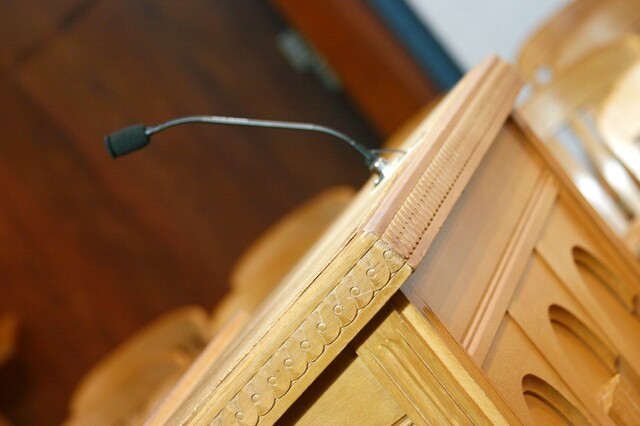As a youth speaker stood and began her very first sacrament meeting talk, I realized she sounded just like a typical adult speaker—and that wasn’t a good thing.
We’ve all heard the sacrament meeting talk that begins with a "horror story"—peeking through blinds or pretending not to be home because you know the bishop is on your doorstep to ask you to give a sacrament meeting talk, avoiding phone calls from the bishopric, or even vowing "revenge" on the person who asked you to speak.
It’s a quirky and prolific part of Latter-day Saint culture, and it’s not just a “Utah thing.” While attending church in India and the Caribbean, I marveled when the local members began their talks this way. But it wasn’t until I heard this 12-year-old girl give her harrowing account of being asked to speak that I realized we adults are passing down this fear of speaking to the next generation, just as it was passed down to us.
Even if a “horror story” isn’t shared, a speaker often expresses their fear and anxiety about being at the pulpit. Most of us can relate, but how many of us have considered how it affects the children in the congregation when they hear us speak this way? “Scared.” “Nervous.” “Sick to my stomach.” Is this really how we want our children—or anyone else—to feel about giving a talk in sacrament meeting?
I’m not suggesting we shouldn’t feel these emotions—public speaking is scary for most people. However, I am suggesting that we keep these emotions to ourselves when we’re standing at the pulpit. Certainly the majority of children in the congregation aren’t hanging on our every word, but I suspect they are picking up on more than we give them credit for. If this is what our children hear week after week, of course they will emulate it when their turn to speak comes.
As members of the Church, we are often asked to speak in public, but no one actually teaches us how to be effective public speakers. It therefore becomes our personal responsibility to learn.
One great way is to emulate Church leaders. For example, in general conference, we don’t see anyone beginning their talks in this manner, even when it is their very first time speaking to millions of people around the world. Perhaps we can take our cue from them and try harder to keep the focus on the message and off of ourselves. We might even choose one of our favorite leaders and study their speaking style by watching past conference talks on ChurchofJesusChrist.org.
► You'll also like: How to give a talk like President Monson
There are also many great resources such as Toastmasters International or Dale Carnegie, public speaking classes or clubs, as well as countless books and plenty of Ted Talks. With just a quick internet search, you are sure to find something that fits your needs.
Honing our public speaking skills will most definitely benefit us at work and in community organizations, but as Latter-day Saints, we have a higher purpose—teaching the word of God to one another and helping each other feel the Spirit. I couldn't agree more with former Baptist preacher and Latter-day Saint convert Wain Myers, who noted, “As members of the Church, it’s our responsibility to take our turn to speak in sacrament meeting. This truth makes it imperative for us to take the time to learn how to speak and communicate our thoughts and feelings to a congregation from the pulpit.”
► You'll also like: How to give a powerful talk: Tips from a Baptist preacher who joined the Church
I know it will take a lot of practice and effort, but I look forward to the day when sacrament meeting speakers forego this "traditional" way of beginning a talk and break the cycle for the next generation.
Check out this hilarious video about speaking in sacrament meeting from Latter-day Saint comedian Shawn Rapier!
This article was originally shared on LDS Living in January 2016.

